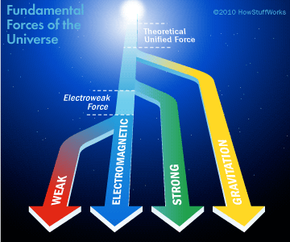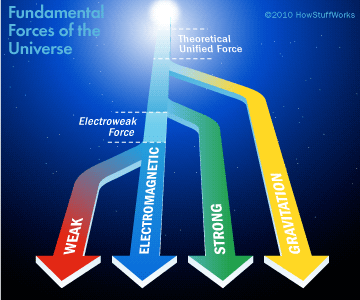As it turns out, scientists think each one of those four fundamental forces has a corresponding carrier particle, or boson, that acts upon matter. That's a hard concept to grasp. We tend to think of forces as mysterious, ethereal things that straddle the line between existence and nothingness, but in reality, they're as real as matter itself.
Some physicists have described bosons as weights anchored by mysterious rubber bands to the matter particles that generate them. Using this analogy, we can think of the particles constantly snapping back out of existence in an instant and yet equally capable of getting entangled with other rubber bands attached to other bosons (and imparting force in the process).
Scientists think each of the four fundamental ones has its own specific bosons. Electromagnetic fields, for instance, depend on the photon to transit electromagnetic force to matter. Physicists think the Higgs boson might have a similar function — but transferring mass itself.
Can't matter just inherently have mass without the Higgs boson confusing things? Not according to the Standard Model. But physicists have found a solution. What if all particles have no inherent mass, but instead gain mass by passing through a field?
This field, known as a Higgs field, could affect different particles in different ways. Photons could slide through unaffected, while W and Z bosons would get bogged down with mass. In fact, all elementary particles that have mass get it by interacting with the all-powerful Higgs field, which occupies the entire universe.
Like the other Standard Model particles, the Higgs one would need a carrier particle to affect other particles, and that particle is known as the Higgs boson.




